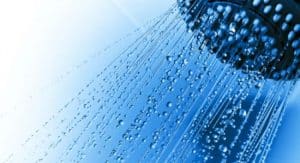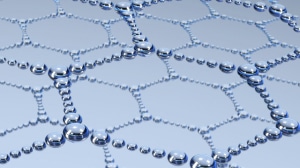Hospitals guzzle water.
 Consider this: a typical American uses about 150 gallons of water per day, the average German uses about 50 gallons per day, and the average African uses just 5 gallons, while United States hospitals utilize 570 gallons of water per staffed bed per day – almost quadruple the already tremendous amount utilized by the average American. In fact, hospitals account for 7% of the total commercial and institutional water usage in the United States. Admittedly, hospitals require a significant volume of water to support critical functions such as sterlization, sanitation, and heating and cooling, but there are certainly areas in which improvements can be made. Many areas of the United States are currently plagued by severe drought, depleted supply, and increased demand, as well as water and sewer rates that are rising far faster than the rate of inflation, and while many hospitals have been quick to address their energy usage and to implement energy-efficient practices, few have considered water efficiency. However, that is about to change.
Consider this: a typical American uses about 150 gallons of water per day, the average German uses about 50 gallons per day, and the average African uses just 5 gallons, while United States hospitals utilize 570 gallons of water per staffed bed per day – almost quadruple the already tremendous amount utilized by the average American. In fact, hospitals account for 7% of the total commercial and institutional water usage in the United States. Admittedly, hospitals require a significant volume of water to support critical functions such as sterlization, sanitation, and heating and cooling, but there are certainly areas in which improvements can be made. Many areas of the United States are currently plagued by severe drought, depleted supply, and increased demand, as well as water and sewer rates that are rising far faster than the rate of inflation, and while many hospitals have been quick to address their energy usage and to implement energy-efficient practices, few have considered water efficiency. However, that is about to change.
Saving water not only protects our most precious resource, it also provides an attractive return on investment (ROI) for most hospitals. But reducing water usage in hospitals isn’t as simple as turning off the faucet — it requires careful research and consideration of a variety of factors including cost and ease of implementation, rate of return, and staff support. Hospital water audits can help healthcare facilities determine which operational and capital measures to implement and in what order, and can pinpoint the measures that will provide the largest ROI and most significant environmental impact while being the least disruptive to hospital operations.
 On average, implementing water efficiency measures decreases operational costs by 11% and water usage by 15%, and results in greater patient and staff satisfaction. Also, by installing water-efficient equipment, hospitals can take advantage of utility rebates and financial incentives that, when combined with operational savings, often result in equipment upgrades easily paying for themselves. And this is just the tip of the iceberg. Larger hospitals can take their water efficiency even further by collecting rainwater and condensate and utilizing it for non-potable functions such as irrigation and toilet flushing, like this state-of-the-art New Orleans hospital has done.
On average, implementing water efficiency measures decreases operational costs by 11% and water usage by 15%, and results in greater patient and staff satisfaction. Also, by installing water-efficient equipment, hospitals can take advantage of utility rebates and financial incentives that, when combined with operational savings, often result in equipment upgrades easily paying for themselves. And this is just the tip of the iceberg. Larger hospitals can take their water efficiency even further by collecting rainwater and condensate and utilizing it for non-potable functions such as irrigation and toilet flushing, like this state-of-the-art New Orleans hospital has done.
For smaller facilities that simply don’t have the capital expenditure needed for large-scale capital improvements, even inexpensive upgrades such as low-flow showerheads, reduced gallon-per-flush kits, and flow-control valves on sinks can add up to big savings. For example, Tata & Howard completed a water audit for the MetroWest Medical Center (MWMC) in Framingham, Massachusetts and estimated that the facility could save almost $30,000 per year after investing just $5,000 per year over a six-year period. And as an added bonus, savings from low-cost upgrades enable hospitals to fund future water saving measures.
With water becoming scarcer and more expensive, hospitals need to look to conservation and efficiency in order to remain profitable. Water audits provide the information, prioritization, and justification needed to implement a successful conservation and efficiency program, and typically pay for themselves in a very short time period. Hospitals that design water conservation strategies today will find themselves ahead of the curve and enjoying significant savings well into the future.

